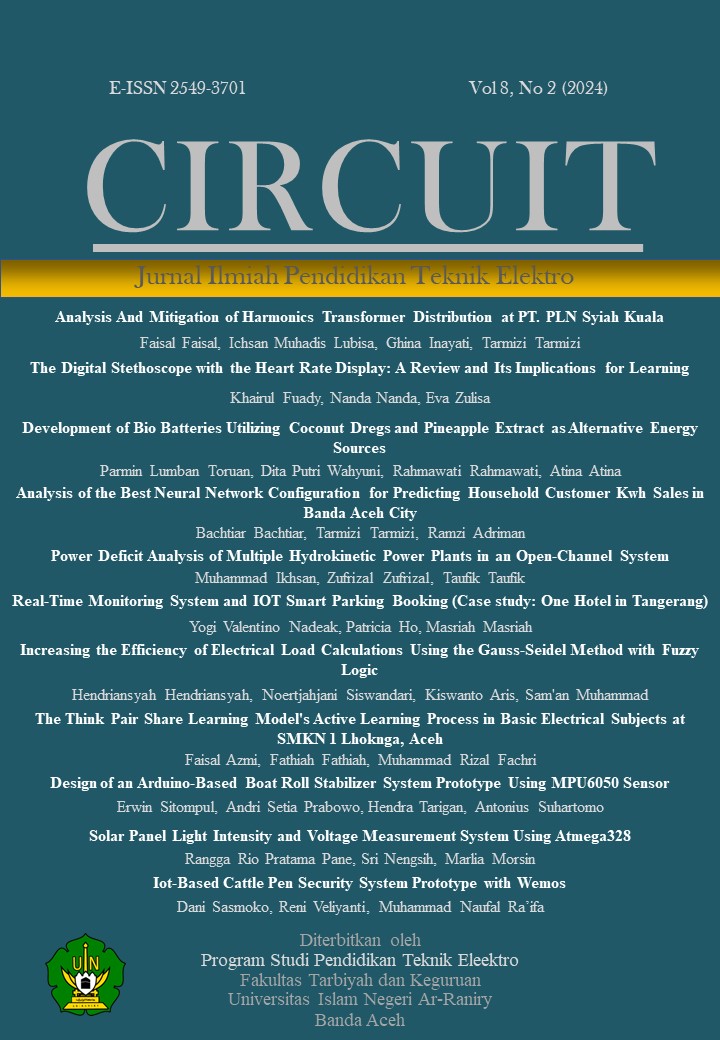Iot-Based Cattle Pen Security System Prototype with Wemos
DOI:
https://doi.org/10.22373/crc.v8i2.23399Keywords:
IoT, Wemos, Cattle PenAbstract
Cattle theft in cow barns frequently occurs in Central Java, Indonesia, highlighting the need for a monitoring system to prevent such thefts. The system developed uses Wemos integrated with a PIR sensor, employing Internet of Things (IoT) methods to detect human movement within the cow barn. A magnetic sensor will be installed on the barn door to provide remote monitoring. The monitoring system activates a buzzer and sends theft data to the cow barn owner from different locations. Testing of this monitoring system was successful, as evidenced by the PIR and magnetic sensors detecting breaches by triggering the buzzer. However, test results indicated that sending data to smartphones requires an internet connection within the barn. Compared to a CCTV system, this setup can deter theft by emitting a loud sound from the buzzer, but it lacks video and photo recording capabilities since it does not include a camera. Based on the design and testing results, it can be concluded that this cattle theft monitoring system has effectively detected suspicious movements in the barn
Downloads
Published
Issue
Section
License
Authors who publish in CIRCUIT: Jurnal Ilmiah Pendidikan Teknik Elektro agree to the following terms:
- Authors retain copyright and grant the journal right of first publication with the work licensed under a Creative Commons Attribution-ShareAlike 4.0 International License (CC BY-SA 4.0) that allows others to share and adapt the work with an acknowledgement of the authorship and initial publication in this journal
- Authors are able to enter into separate, additional contractual arrangements for the non-exclusive distribution of the journal's published version of the work (e.g., post it to an institutional repository or publish it in a book), with an acknowledgment of its initial publication in this journal.
- Authors are permitted and encouraged to post their work online (e.g., in institutional repositories or on their website) prior to and during the submission process, as it can lead to productive exchanges, as well as earlier and greater citation of published work. (See The Effect of Open Acces)

